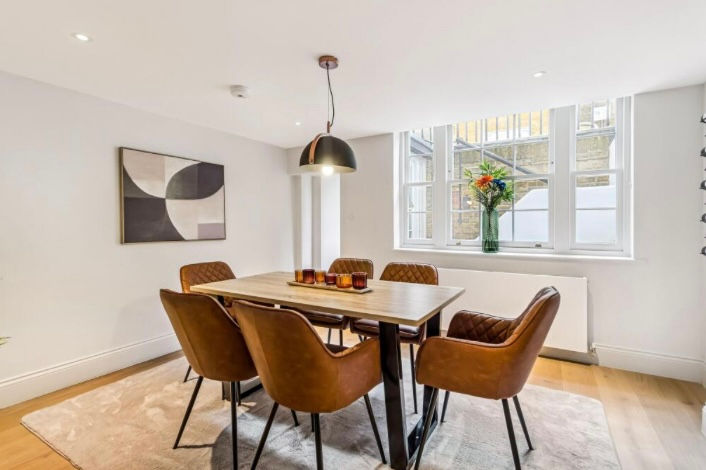How to Create a Space with Harmony, Character & Functionality
- naomichance
- Sep 11, 2024
- 3 min read
Updated: Mar 24

I’m often asked, what principles do I use when I am designing a property? How do you create a space that feels balanced, cohesive, and visually stunning?
I wanted to share a look at my 7 Principles, which are foundational guidelines that help create spaces with harmony, character, and functionality.
These will help you create harmonious interiors that convey character to your property.
Here's an overview of each principle:
1. Balance
If you can achieve balance, it will help your property stand out and give your space a sense of stability. This involves distributing visual weight evenly across a space to create a sense of stability. There are three types of balance:
Symmetrical: A traditional approach where one side mirrors the other, creating a formal balance (e.g., matching bedside tables and lamps).
Asymmetrical: More relaxed, where similar visual weight is achieved using different objects (e.g., different chairs with similar size or shape).
Radial: This focuses on a central point, with elements radiating outward (e.g., furniture arranged around a fireplace).
2. Unity
Unity refers to the cohesive flow of design elements across a space or multiple rooms. It can be achieved through consistent colour schemes, shapes, or materials. A unified colour palette across different rooms creates a harmonious flow.
It’s all about creating cohesion through a common theme or colour palette or design, for example, you could achieve this through material choices, furniture sizes, or creating harmony through accessory shapes throughout. Although you want each room to have its own identity, the flow of the theme should reverberate throughout your home to establish unity.
3. Rhythm
Rhythm in design is about creating movement and guiding the eye through repetition. You can create rhythm by repeating certain elements like finishes, colours, or materials, such as using the same hardware finishes across a home.
For example, your could accomplish this through the same tapware finishes in the kitchen and bathrooms, and you could pair up the same cabinets or counters to create eye-catching consistency.
4. Scale and Proportion
These principles address the relationship between objects and the space they occupy. Scale refers to the size of objects relative to the room (e.g., large furniture in a spacious room), while proportion deals with how well objects fit together and relate to each other within that space.
For example, with colour proportion – you could repeat a theme colour in your artwork with your cushions and rugs.
5. Contrast
Contrast is a dynamic principle that plays with opposites—such as light and dark colours in the same space, rough and smooth objects —to create interest and visual tension. Using contrasting colours or materials (like pairing a dark wood table with light chairs) can make a space more engaging.
6. Emphasis
Emphasis focuses on creating a focal point that immediately grabs attention. A striking piece of art, an accent wall, or a bold piece of furniture can serve as the centrepiece of a room, adding personality and character.
7. Details
The smallest details, like the stitching on cushions, the design of door handles, or the type of cabinet knobs, can elevate a design. These finishing touches contribute to the overall aesthetic, helping to tie a room together in a subtle yet impactful way.
By applying these principles, you can create a well-designed space that feels balanced, cohesive, and visually stimulating.
Article publish date: 06/03/2025
Article review date: 06/09/2025




Comments